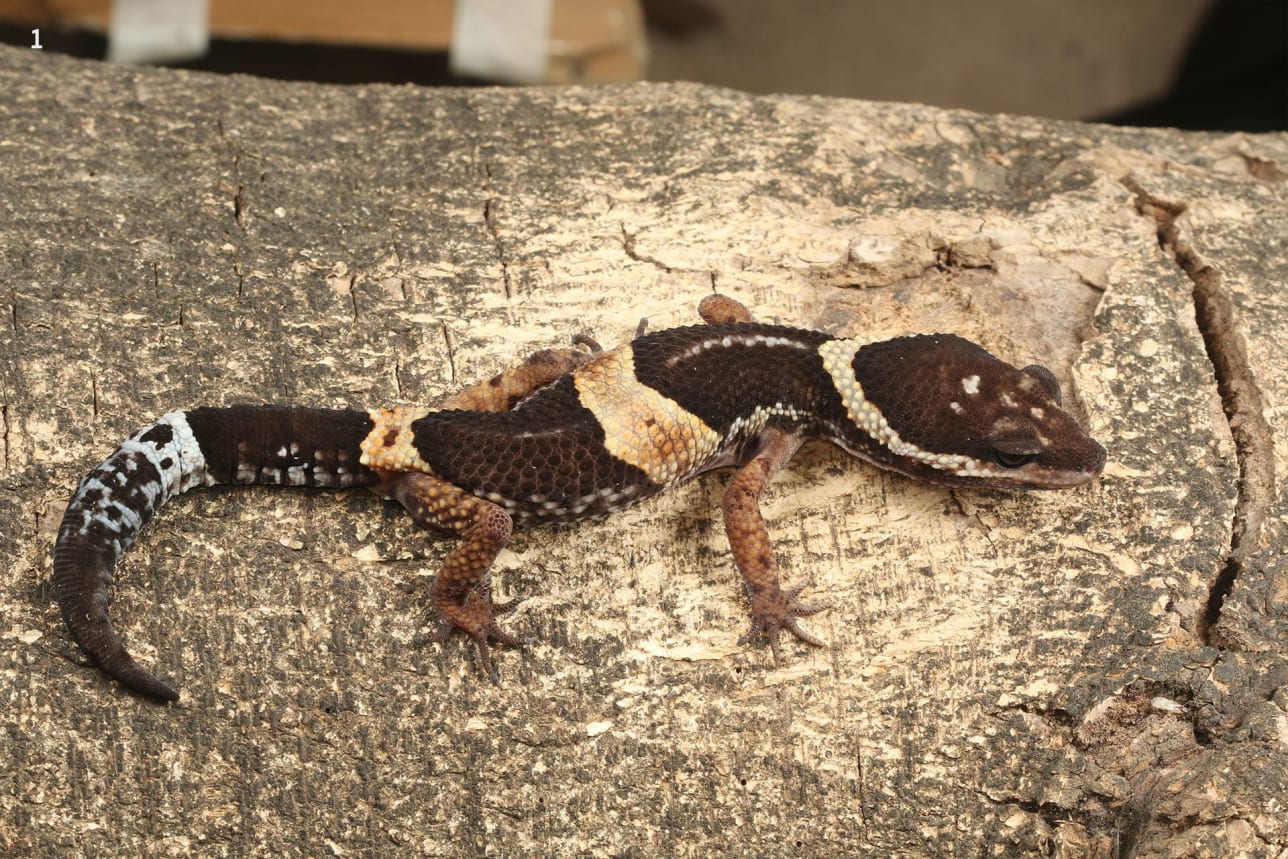 Listen to this article
•
15:34 min
Listen to this article
•
15:34 min
Every natural instinct urges me to recoil, to refuse to go into the cave’s narrow opening. Claustrophobia has nothing to do with it. The cave in question is in Simhachalam, and it is teeming with geckos, a creature I am less than enamoured with despite all my years of walking in the wild. That’s putting it mildly. In truth, I am mildly phobic of lizards and (screech-and-run) phobic of roaches. The fact that the former ensures the world has less of the latter endears me to it a little bit. A teeny, tiny, minuscule bit.
I digress and dither, just as I had at the entrance to the cave, watching Srichakra Pranav, founder of East Coast Conservation Team (ECCT) and my gracious informant of all things wild in Vizag, look for the subject of our story.
“They’re here,” he calls from within the cavernous tunnel. They. Plural. I take a deep breath and enter, clutching my backpack like a koala carrying its newborn, trying to make myself smaller so I don’t brush against the walls. I see them immediately; the cave is clearly their preferred home; they’re abundant.
Once my brain unclenches enough to register my surroundings, my first thought is — hmm, not that golden. Which is true. The golden gecko (Calodactylodes aureus) comes in different morphs, the dominant males being brighter yellow while other males and females range from reddish brown to brown. The scaly body is around 5-10 cm long (excluding the tail). The eyes, large and oval, are mere inches from mine. We regard each other with what I assume is mutual discomfort. I have invaded its home, after all.
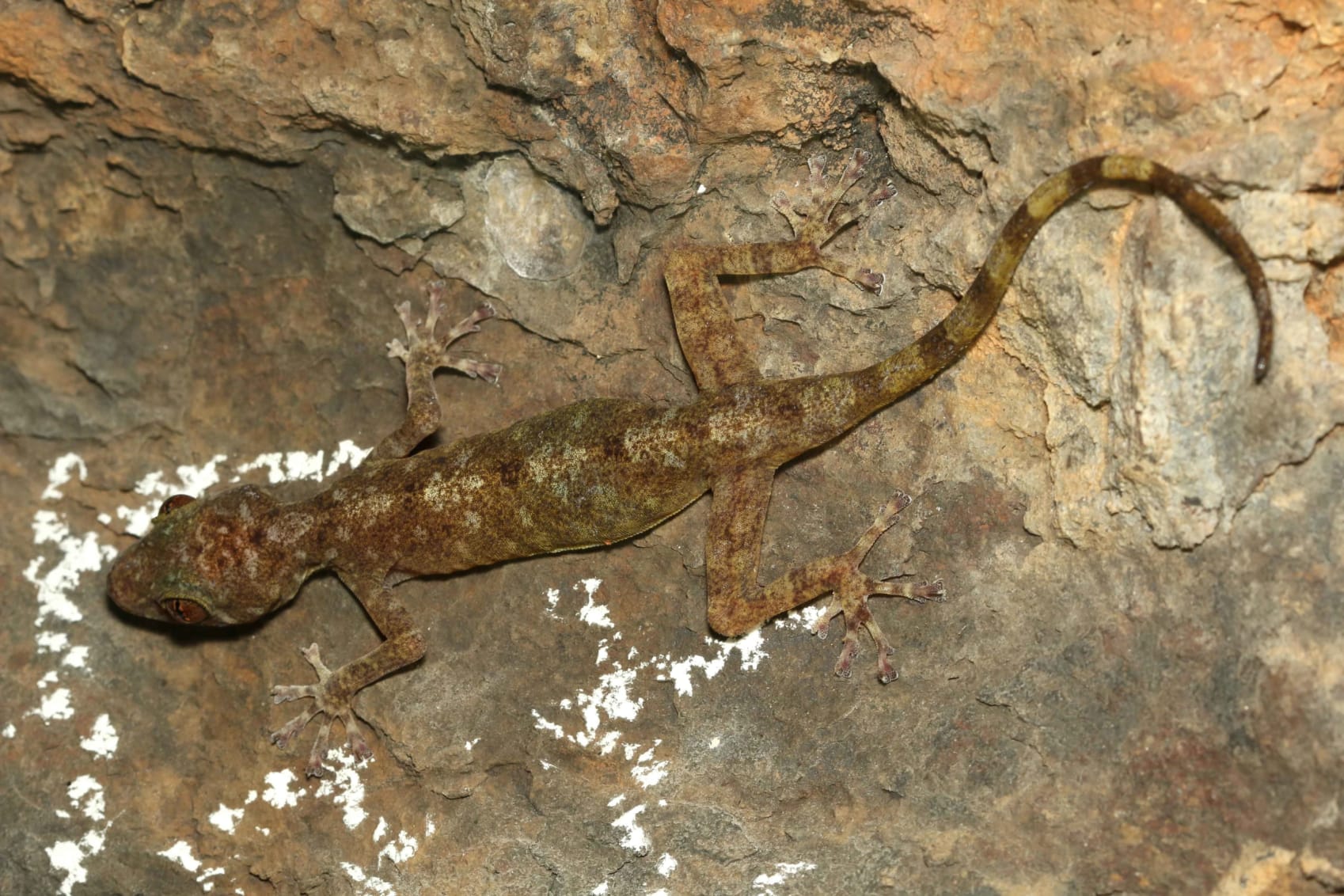
Cover Photo: During the breeding season male golden geckos turn from brown to a dull, golden yellow to attract the attention of females. Photo: Zeeshan A Mirza
The golden gecko’s “home” range is all over the central and southern Eastern Ghats, from Odisha to northern Tamil Nadu, and it is prevalent in the Tirupathi (Seshachalam region) and northern Andhra Pradesh ghats.
Chandrashekaruni Gnaneswar, a herpetologist at the Madras Crocodile Bank Trust in Chennai, lived in Vizag for the first 15-18 years of his life. He went herping at night, when humans retreated indoors, and the reptiles (including geckos) came out to play.
All geckos are lizards, but all lizards are not geckos (Order: Squamata; Infraorder: Gekkota). Gnaneswar believes that ongoing research work on geckos is vital. “Primarily because they’re misunderstood,” he says. “They are so mysterious and elusive, one never knows what they are experiencing or feeling, making them fascinating. Also, they are everywhere and are not restricted to forests. They are abundant in the Eastern Ghats. As a child, I remember hearing them shouting around the house with their distinct call.” People often use reptiles to represent something negative, and Gnaneswar is working on education, research, and awareness to prevent them from being portrayed in poor light.
To quote from Micheal Crichton’s Jurassic Park: “For a mammal like man, there was something indescribably alien about the way reptiles hunted their prey. No wonder men hated reptiles. The stillness, the coldness, the pace, was all wrong. To be among alligators or other large reptiles was to be reminded of a different kind of life, a different kind of world, now vanished from the Earth.”
While I may not fully subscribe to the quote, it’s true that we inherit a flawed conditioning about what reptiles are and that gets passed down through generations. And that’s exactly why we need to make an extra effort to understand the “other” — whatever that means for each of us. For example, the gecko in the cave is so very different from me; it doesn’t appear “beautiful” in the traditional sense to me and makes me uncomfortable. And for that alone, I know I must try my best to understand it a little more. Then I’ll learn a little more about it and where it lives (and, dare I say, about me as a person, hunched cowardly over something so tiny and harmless).
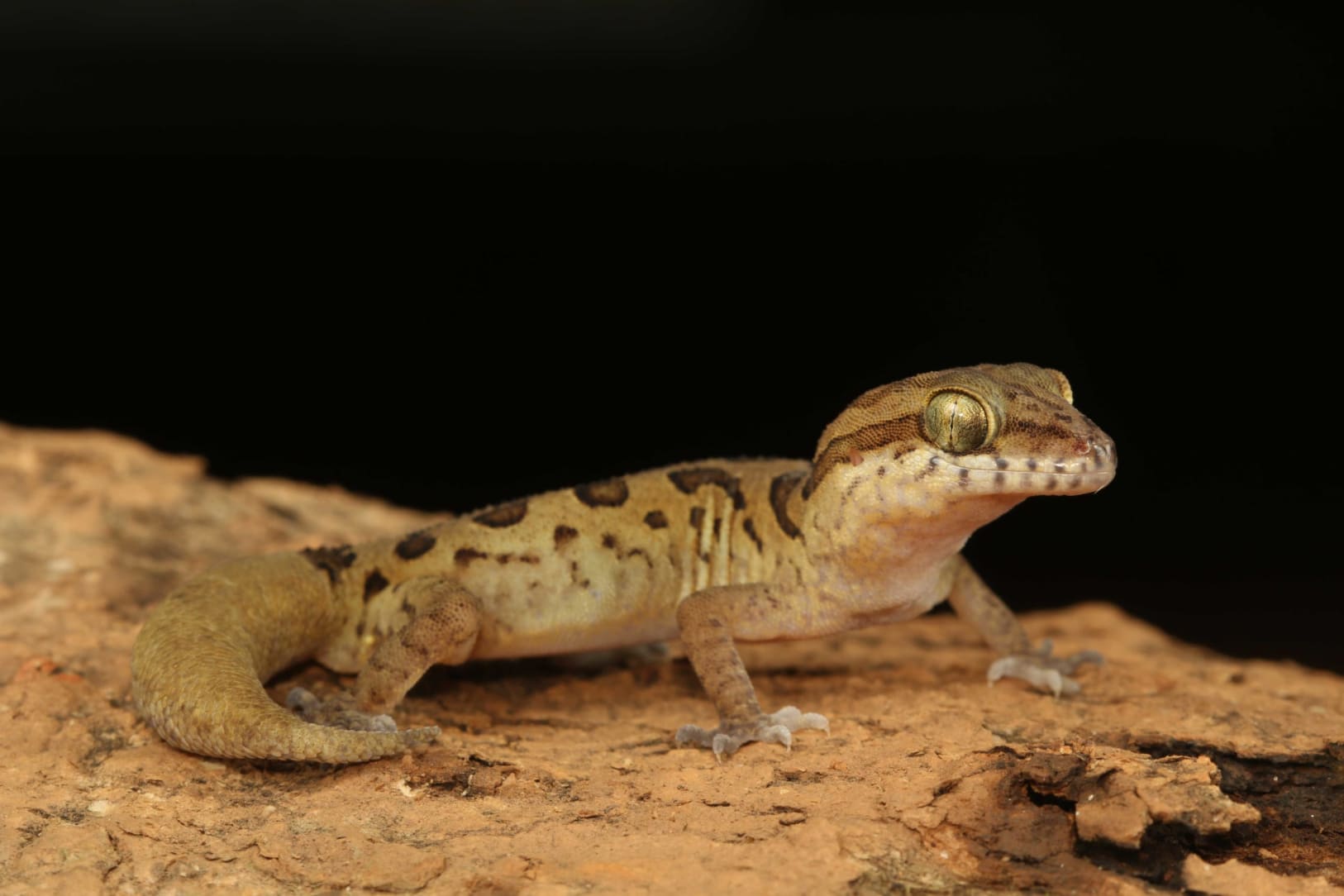
The golden gecko is one of six endemic (found only here) species in the Eastern Ghats. This cave suits a golden gecko’s specific requirements of dark spaces and environments with water or streams. Funnily enough, this also describes its other preferred space — public bathrooms.
I nod a fond hello to the other inhabitants of the caves, the lesser mouse-tailed bats, aware that my favouritism is showing. I see small patches of white on the cave walls — egg cases, in clusters, at small distances from each other. Unlike other species of geckos (which lay eggs in the ground or cavities in caves), the golden gecko sticks its eggs to cave walls. This could be for protection, as caves often have small streams, and there is the threat of floods destroying the eggs. “Or it could also be a way for females to mark their territories,” says Gnaneswar. “But so much about reptile research is just hypotheses, not proven behaviour. For example, in the caves, some females are dominant, some are submissive, yet they mate with the same dominant male. Even physically, they change so much in a single season — their colour is darker or lighter, or if two females fight, part of the wounded skin is replaced with fresh skin, and so on. So, unless researchers use invasive methodologies (like PIT tagging (microchipping) and DNA identification using blood or tail clips), they are difficult to identify as individuals. Both methods require capture of the creatures every time we want to ID them, which obviously stresses and risks harming them.”
Golden geckos are different in more than one way. They have unique lamellae (small, plate-like structures on the underside of their toes that help them grip surfaces). Usually, gecko lamellae are like fern leaves, but the golden geckos are shaped like a brush, almost rectangular, and coloured differently. That’s probably why this gecko falls under an entirely different genus from other geckos — Calodactylodes.
To understand the differences, let’s look at the other geckos endemic to this region: Dutta’s Mahendragiri gecko (Hemidactylus sushilduttai), Araku slender gecko (Hemiphyllodactylus arakuensis), the clouded Indian gecko (Cyrtodactylus nebulousus), Jeypore gecko (Cyrtodactylus jeyporensis), and the painted leopard gecko (Eublepharis pictus).
The first two are climbers, like the golden gecko,” says Gnaneswar. “Dutta’s Mahendragiri gecko is large, averaging almost 10 cm (excluding the tail). We used to call them dinosaur geckos in jest when we were younger.” The Araku slender gecko, on the other hand, is tiny, even smaller than the golden gecko, with a distinctive orange tail under an otherwise brown body.
The clouded Indian gecko is a smaller creature (perhaps the size of an index finger, between 3-8 cm long) that is also abundant here. It is ground-dwelling and hence does not need its lamellae to grip but to facilitate walking on the ground.
Like humans choose homes based on what they need to survive, we see how a habitat plays a part in the creatures that choose to live there. And changing conditions also affect their numbers. The Jeypore gecko (Cyrtodactylus jeyporensis), a critically endangered species that was first recorded in 1878, resurfaced in the public record in the region after 133 years. Also a ground dweller, this gecko reminds me of the Russell’s viper, with its reddish brown and black colouration,” says Gnaneswar. “Unlike the golden gecko, which has a climber’s body, slender with a long tail, this one can be described as stout.” Discovering the painted leopard gecko is a personal accomplishment for Gnaneswar, as he and fellow researcher Zeeshan Mirza recorded it for the first time as a new species in 2022. That made newspaper headlines, catapulting the humble gecko to stardom. The strictly nocturnal painted leopard gecko (Eublepharis pictus) differs from other geckos. It is larger than the other endemic geckos, with distinctly coloured eyelids (unlike most other geckos), which is perhaps why it is in demand in the illegal pet trade, along with the Jeypore gecko.
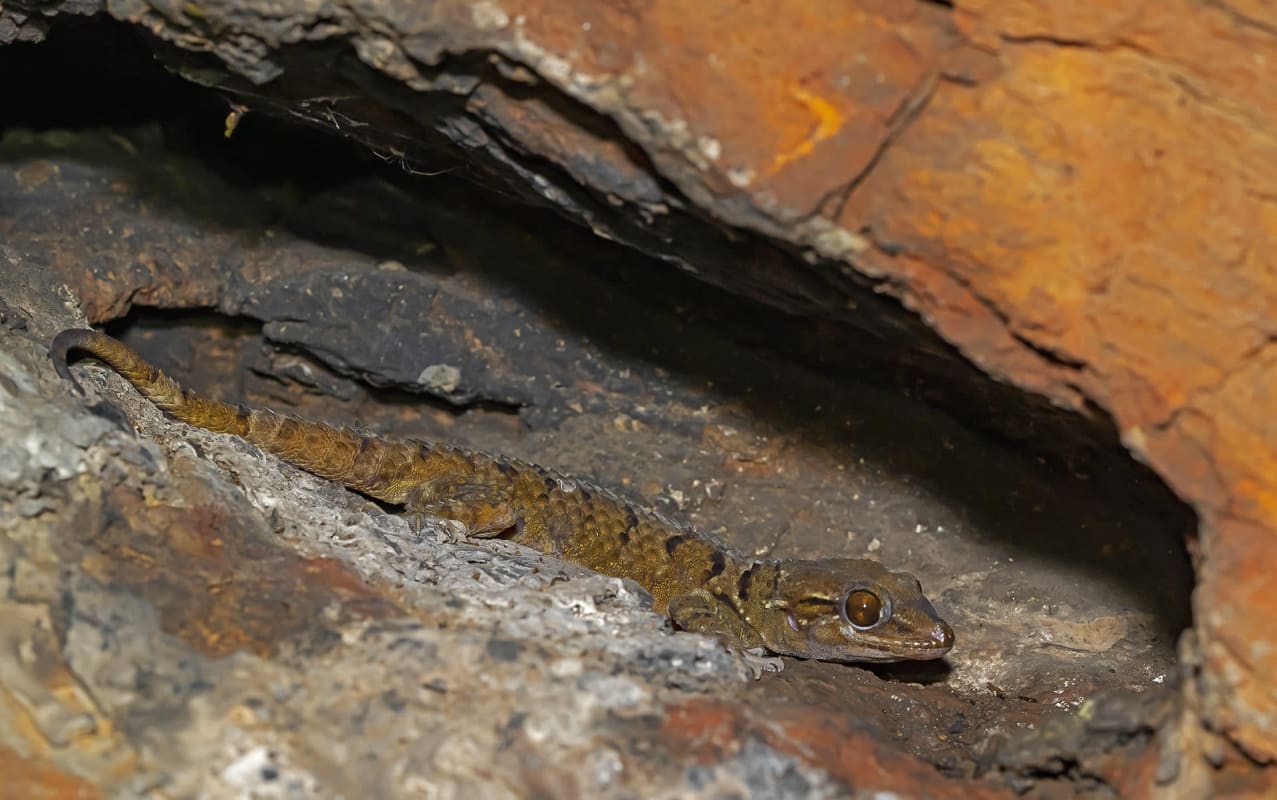
Gnaneswar’s first-ever sighting of the Jeypore gecko was of a captive individual. “India has also become a consumer lately, but the trade is mostly to Europe, the USA, and Scandinavian countries. It is increasingly in demand because you need wild individuals to replenish the captives in breeding. Let’s say you want a pure white leopard gecko, a colour which is becoming a trend. You need to continuously inbreed them and bring about a generation-to-generation mutation to achieve that kind of albinism. It requires knowledge of the genus you’d like to reach.” Like with dogs, illegal breeding is rampant in the gecko trade, and it’s faster for reptiles because of their quicker breeding pace.
Golden geckos and tokay geckos were the only geckos in India listed under Schedule I and IV, respectively, of the Wildlife Protection Act, 1972. But in 2022, more species, including all leopard geckos of the genus Eublapharis, were accorded protection.
Anirban Chaudhuri, herpetologist and independent researcher, says he has not seen the seizure of consignments of golden geckos. “It might have been put under the protection of Schedule I more from the perspective of ecological rarity rather than the threat of trading,” he says. Apart from the tokay gecko, which is heavily traded, Chaudhuri says that the painted leopard and (if at all) the golden gecko are traded by hobbyists and are not yet in the organised crime circuit.
It could also be that they are easier to smuggle and move across countries because of their small size. “Beautiful, smaller geckos, like the golden gecko, painted leopard gecko, or the termite hill gecko, are very convenient to keep,” says Jose Louies, Chief Executive Officer, Wildlife Trust of India. “If we look at it from a potential owner’s perspective, they are low-maintenance animals — no need to take them out for walks, easy to feed, not much poop to clean. Temperature control is the only thing that needs a proper check. And they are active creatures. All these qualities make them vulnerable to the pet trade.” He acknowledges that things are made worse because of educated, scientifically knowledgeable traders who use innovative methods to smuggle these creatures. “Monitoring cyberspaces is the most effective way to tap into the markets for now. Online groups, even on social media, are selling reptiles and other creatures.” Enforcement is also complicated because geckos (except the Jeypore gecko and tokay gecko) are not listed under CITES (Convention on International Trade in Endangered Species of Wild Fauna and Flora), so once they leave our borders, nothing can be done.
India isn’t as big a market for organised wildlife crime for these species as it is for birds, mammals, and larger reptiles. Larger reptiles may be found in confiscated consignments, but they are primarily found when imported rather than exported. “What this tells us is that imports have stricter surveillance than exports because of security issues; it does not necessarily mean that we have larger numbers of illegal reptile imports over exports. For smaller creatures like the gecko, it is extremely difficult to gather statistics.”
According to Jose Louise, this rings an alarm bell, telling us what we should focus on. “Species like the iguana, red-bellied piranha, and African catfish are imported to India, and these can cause mayhem when released into our wild spaces. Australia imported the common mynah from India thinking it was an effective way to kill pests, but now, they are dominating the ecosystem and are being purposefully eradicated. Trade imports, especially of smaller creatures which fly under the radar, are becoming a bigger problem in our country. It is a threat to security and biodiversity.”
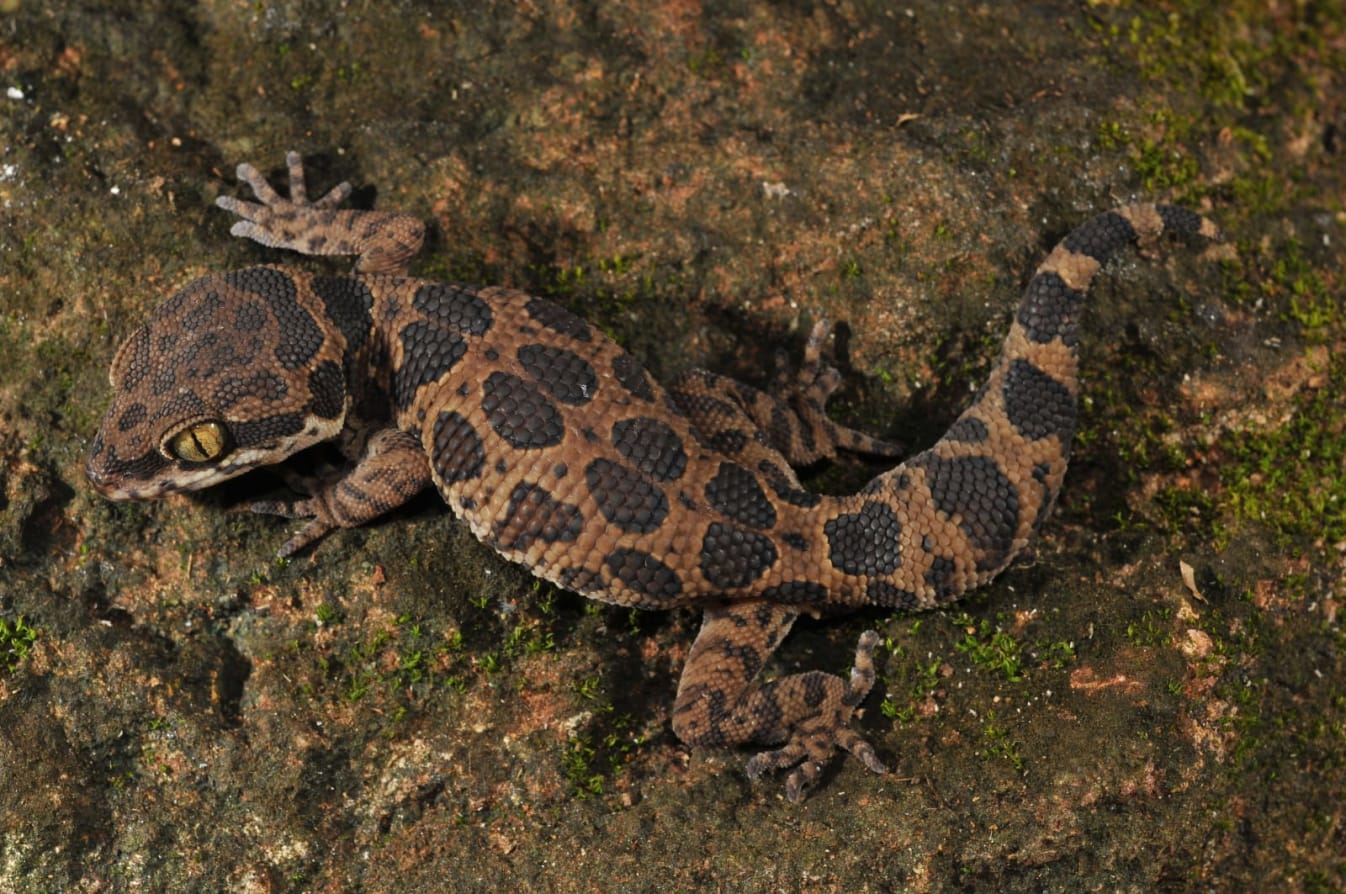
For the longest time, research in this landscape was difficult due to insurgencies and lack of access. Now that it has opened up, more people are working on it. Compared to the Western Ghats, these ghats have a lower species density due to limiting factors such as temperature, rainfall, and lower altitudes. The Eastern Ghats are relics, the chain broken at several intervals, stopping gene flow along the ghats. Additionally, they have been heavily exploited for rock quarrying and development projects, leading to habitat loss. And yet, in pockets, animals thrive.

The bad press around geckos includes misconceptions derived from religion, myth, and conditioning. A belief in some parts of South India is that if a gecko falls on your shoulder, you will die unless you bathe and offer prayers. Or the more widely accepted myth that they are poisonous. House geckos often find their way into our kitchens and can sometimes fall into food, giving us food poisoning (they are unpalatable), but they are not poisonous. There is a distinct difference.
Despite my understanding of the wild and the experiences where I have willingly and without question stayed in places that host wild creatures (and me), I am still uncomfortable when I find one inside my house. As I write this, I am engaged in a stalemate with a house lizard I am trying to nudge into leaving my kitchen. It stares me down and refuses to go, disappearing into hidden spaces until it chooses to be seen again. I wonder about my behaviour. I ask Gnaneswar what we could benefit from remembering about these creatures so we can coexist with them. “Geckos are vital pest controllers,” he reminds us. “They control insect populations. Insects would otherwise literally fly into our mouths, drinks, or water. Geckos are a misunderstood species, but they’re not dangerous. They’re very docile creatures, and they never kill anybody. Let’s just start there.”




